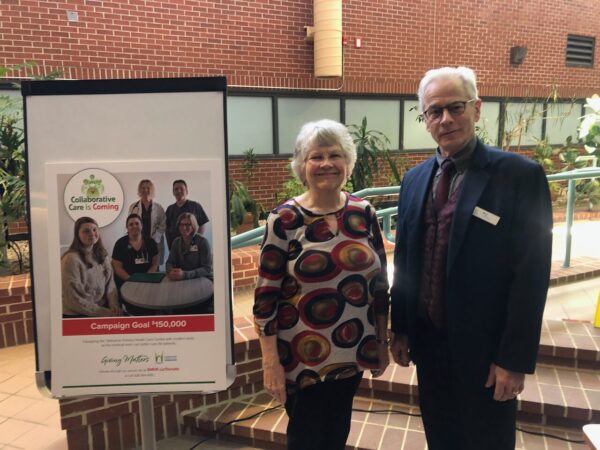
Nonprofits and charities that make up the community sector perform essential work, but underfunding has left their majority-female workforce exhausted.
That was the message from an advocacy group that demonstrated in the provincial capital on International Women’s Day, calling on governments to invest more in the community sector.
“We’re left to fight for scraps of money among each other,” said Elise Pelletier, communications officer and political analyst for the Moncton-based Regroupement féministe du Nouveau-Brunswick.
Women make up 80 percent of the workforce in nonprofits and charities, according to a 2020 report (PDF link) published by the Canadian Women’s Foundation.
It’s an area of the economy that provides essential caring work but which is “funded through an inadequate model consisting of unpredictable individual donations and gifts, earned income, and government service and project contracts,” the report states.
Many of the services provided by the community sector affect the well-being and survival of women struggling with issues like homelessness or domestic abuse.
Groups such as Crossroads for Women — which operates an emergency shelter in Moncton for women, trans and non-binary people and their children — saw a surge in reports of domestic violence after COVID-19 resulted in lockdowns beginning in March 2020.
“It’s quite worrying for us to witness that, and to see a provincial government raking in a surplus, while we know specifically which organizations need more funds,” Pelletier said.
That’s a reference to the third-quarter results for the 2022-23 fiscal year announced last month by the Higgs government, showing a $862.6 million surplus.
In recent decades, governments in countries like Canada, the U.S. and Great Britain have moved towards neoliberal forms of governance that favour free market capitalism, deregulation and reduced government spending.
As part of austerity measures, governments have offloaded the responsibility for social services onto the community sector, resulting in “extreme pressure on those organizations,” Pelletier said.
“The reality is, they’re exhausted, so we have more and more people falling through the cracks,” she said, adding that activities like grant applications take up significant resources that could otherwise be used to deliver essential services.
Women in the community sector, who tend to earn less than their male counterparts, end up performing unpaid work to ensure the work gets done, she said.
CHMA also reached out to Margaret Tusz-King, a Sackville resident with an extensive background in the community sector.
“Women who work in the community sector in North America are poorly paid, with few savings, if any,” she said in an email.
A few years ago, she was involved in a lobbying effort, pushing the government to support retirement investments for workers in the community sector.
“The statistic that floored me at that time was that most women who retire after a lifetime of service to community work such as food banks, childcare and working with the disadvantaged, have an average of just $800 savings by the time they are 65, with no other assets,” she said.
Was that a typo? Nope, just $800.
Once their Canadian Pension Plan, Old Age Security and the Guaranteed Income Supplement are factored in, many women retire with an income of “perhaps $24,000 per year,” she said.



















